Lebanese cedar: description and cultivation
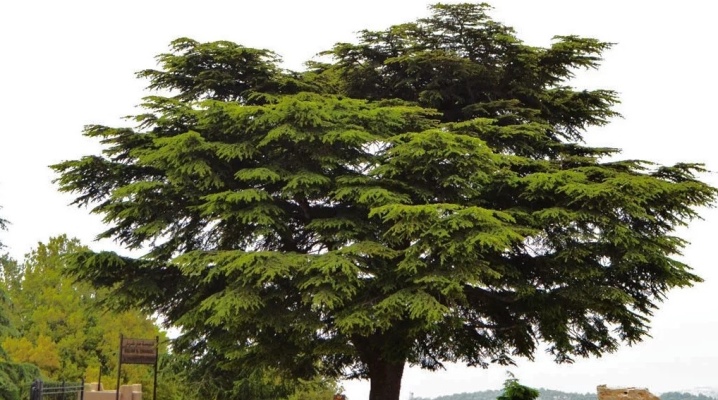
The Lebanese cedar is a striking and rather rare example of the cedar genus, which belongs to the group of pine trees. He has been known to man since very ancient times, mentions of him can be found in various historical manuscripts of the Mediterranean countries, Lebanon, and even in some parts of the Bible and the Koran. This plant is considered a relict endemic, as the population is decreasing every year, and at the moment there are only 4 species of Lebanese cedar.

Description
Lebanese cedar in natural conditions can reach a height of 55 meters, and the thickness of the trunk in the girth reaches 3.5 meters, but in gardens and parks it does not exceed 35 meters in height and two meters in girth.
The bark of the tree has a dense, rich dark color that can range from brown to gray. The thickness of the bark reaches 5 cm closer to the roots and up to 2.5 cm near the branches.
The top or crown, like all pine plants, is conical, but it can also have a spherical shape. After the age of 16-17 years, the branches of the trees begin to grow at an almost even angle, lying horizontally in layers. The lower the branches are, the larger, more massive, and closer to the top of the tree they become short and thin. As a result, the cedar looks like an elongated mushroom.

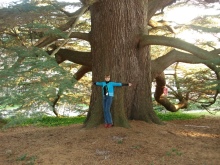
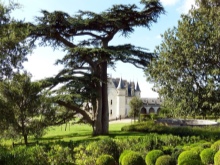
The coniferous cedar cover has a 4-sided structure, the color of the needles is usually dark blue with a yellow-lemon gradient near the tip. The needles are collected in small "bouquets" of 15-25 pieces, which are natural phytoncides that produce a large amount of volatile biologically active substances, which suppresses the development of harmful bacteria and insects. The length of the needles is about 4-5 cm. They are updated gradually once every 2 years.
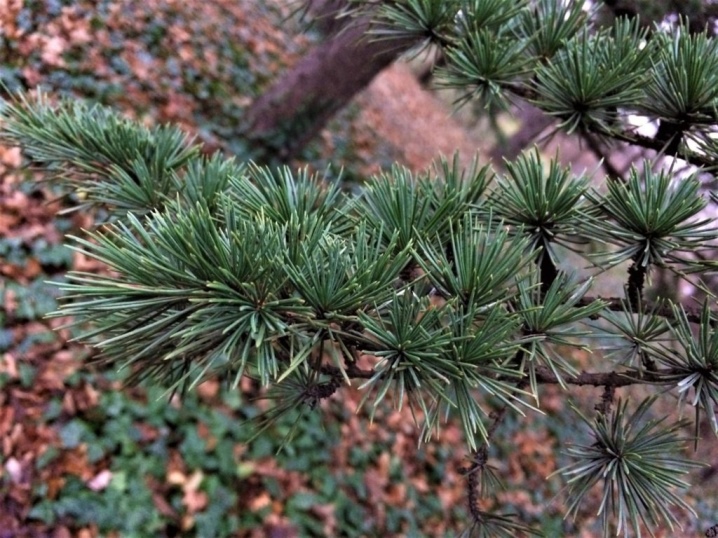
Cones can be of different shapes: cylindrical, barrel-shaped and spherical. It all depends on the climate in which the plant is located. In hot conditions, the buds will be shorter and wider, while in cool conditions they will be more elongated and thinner. Their maximum length is 15 cm, and their thickness is 5-7 cm. The cones themselves appear on the tree only after 25 years.
The seeds inside the cones are inedible, covered with a special oil, which can often be found in medicinal cosmetics - it improves the production of collagen in the skin, which has a beneficial effect on its condition.
The seeds can be harvested 2 times a year. The first time is at the beginning of December, and the second time is at the end of July.
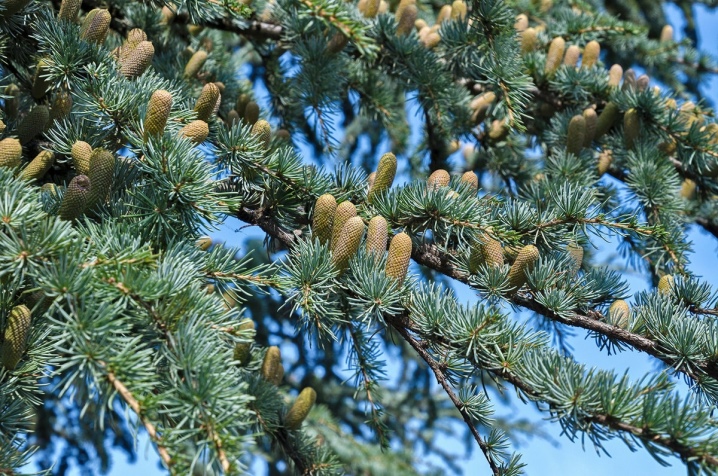
Varieties
Due to the huge popularity of this type of tree among landscape designers, several varieties of Lebanese cedar have been developed that are suitable for gardens and parks.
Sargentii
The variety was bred by Japanese breeders. Its feature can rightfully be considered unpretentious care and planting. Sargentii can grow without any problems both on sand and among rocks. The needles have a rich emerald color.
The crown is creeping, and the plant itself belongs to semi-dwarf trees. Its growth at the maximum level reaches no more than 3 meters, growing by only 0.3-0.2 millimeters per year. It is rooted up to 3 meters deep. For development, he prefers shady areas without direct sunlight.
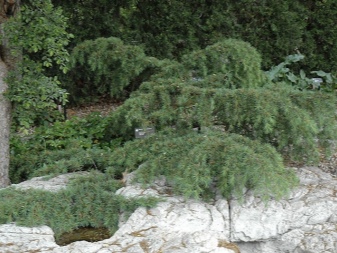
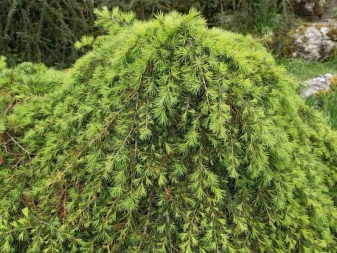
Beacon Hill
Small plant up to 5 meters high with weeping branches... Due to its aesthetically pleasing appearance became popular among designers and decorators... Beacon Hill has a bright green coniferous canopy, a slightly golden trunk and lush bunches of needles.
This type of cedar grows almost everywhere, but it is still better adapted for hot climates. Its roots are dotted with small pores, which are able to absorb and retain more moisture than other conifers. That's why Beacon Hill does not require frequent watering and grows best in open areas with an abundance of light.
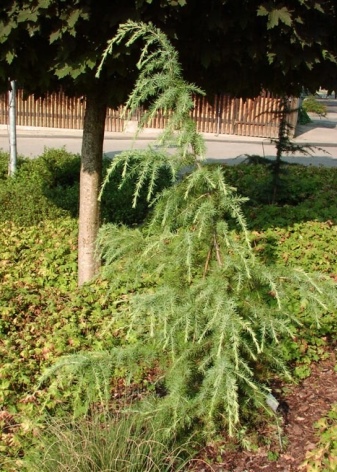
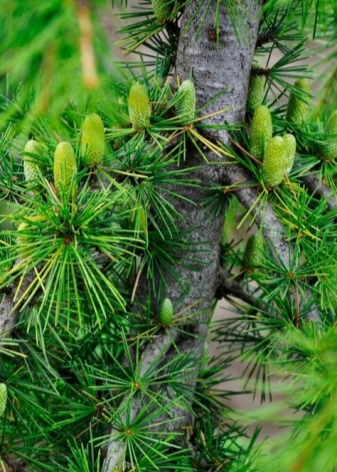
Glauca
A tree that is in no way inferior to the classic Lebanese cedar. Reaches up to 50 meters in height and does not exceed 2 meters in diameter... Each year it grows by about 1-2 centimeters. The color of the bark is dark with a slight shade of red. With the age of the tree, the color of the trunk changes. So, in the early stages of growth, the bark is light gray, and with age it becomes only darker.
Begins to bear fruit from the age of 6, while the cones are large with a purple tint... Inside the buds there is a special aromatic oil that helps the plant protect itself from pests. Glauca can be found in many parks and gardens due to its abundance and fertility.
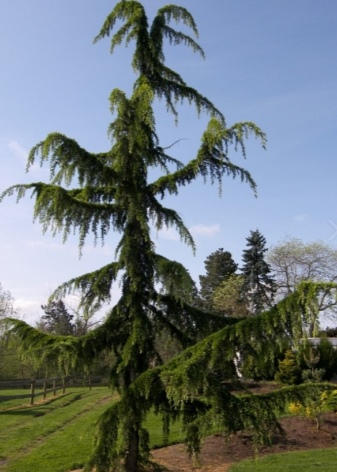
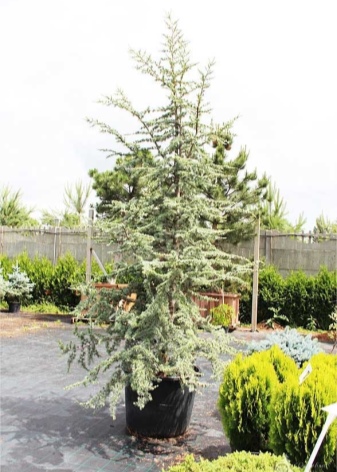
How to plant?
To self-plant the Lebanese cedar, you first need to choose a seedling. It should be healthy, without cracks, rot or other damage on the surface of the bark. It is better to buy seedlings in nurseries together with components for cedar care.
Sprouts with closed roots take root faster, but the work itself is best done in mid-autumn, since the earth is well moistened and maintains the desired temperature.
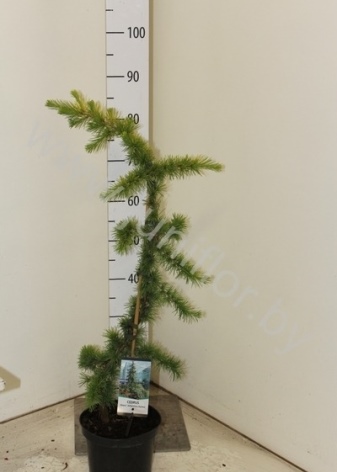
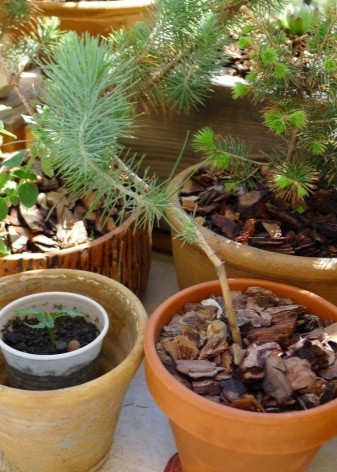
As for the site itself, then here you should give preference sunny places, given that the tree you are going to plant is rather big, so there should be enough free space on the site... The land needs to be prepared another month before planting. It is necessary to dig a hole about 50 centimeters in diameter, but it is better to focus on the size of the root system. Then just wait for the soil to settle, and only then proceed to the main stage:
- fill the bottom with expanded clay or pebble drainage;
- peat and sand are poured on top in a ratio of 2: 2 together with mineral fertilizers;
- then add organic fertilizers in the form of ash, compost or humus;
- drive in a stick or other support to which the seedling will subsequently be tied;
- cover the fertilizer layer with the finished substrate, filling everything with water;
- wait until the water is absorbed and the soil settles;
- put a cedar seedling in the hole, covering the roots with earth (so that the plant takes root faster, dip the roots in liquid clay before planting);
- at the end, we tie the sprout to the established support with a thin rope.
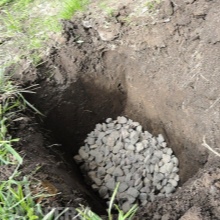
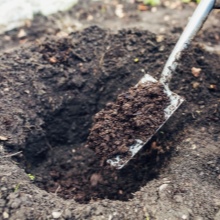
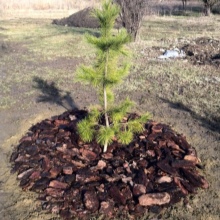
Care rules
At home, Lebanese cedar is mainly grown using the bonsai technique. But there are also some rules of care:
- a lot of sunlight;
- stable air temperature;
- a large amount of water and fertilizers;
- surface washing of the tree crown;
- environmentally friendly fertilizers.
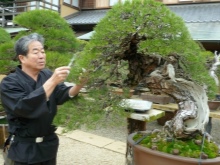
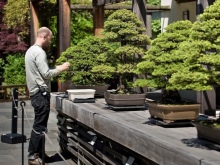
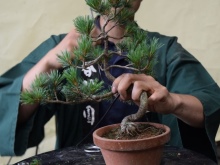
Reproduction methods
The Lebanese cedar has two breeding methods. The first occurs by the formation of seeds in the cones, the second by transplanting cuttings.
When grown from seeds, the probability of their germination is 50%. They are stored in cones for up to 20 years, where they are saturated with useful substances in order to continue the genetic line. Under natural conditions, small rodents and birds are engaged in the spread of seeds. Seeds germinate without special preparation at a temperature of + 5 ° C after several weeks in the ground. To get the seeds and not damage them, you must first soak the buds in warm water for about 2 days, and then dry. Then you can easily get the seeds out.
You can buy seeds in a specialized nursery, as this species is quite rare.
After purchasing, you will need to mix a special substrate (which can be purchased ready-made in the store) from sheet soil, needles, sand and a mineral additive by placing the resulting mixture in a container.Then you need to plant the seeds a few centimeters into the substrate, and put the container in a cold room with constant bright electric lighting.
If you did everything correctly, then the first sprout should appear after 2-3 weeks. Next, you need to wait until the sprout grows to about 50-60 centimeters.
You should not expect gigantic sizes, since artificially grown Lebanese cedars rarely overcome a height of 15 meters, and the life expectancy is about 80 years.
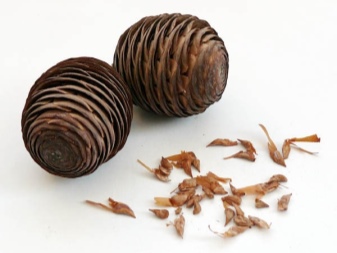
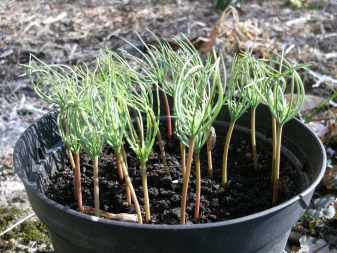
Cuttings are best collected in the summer, cutting off approximately 20 cm branches. The planting itself must begin at the beginning of spring due to the abundance of moisture and active components in the ground. Before this period, planting cuttings is risky. Also, remember to keep the branches damp, wrap them with plastic wrap or cloth, and soak the cuttings regularly with water. This will increase the chances of successful germination of Lebanese cedar.


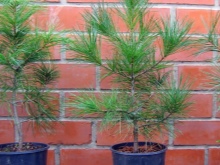
Diseases and pests
Since the Lebanese cedar is a relict plant, it is susceptible to all sorts of diseases and is seriously threatened by pests.
Pests
Coppers, aphids, scale insects, bugs and bukarkas do not pose such a threat to the Lebanese cedar as phytopathogenic fungi. These are vivid representatives of parasitic lower plants. Having lost the opportunity for independent photosynthesis, these fungi germinate on the bark of a tree, infecting it with their spores, which literally dissolve the structure of the tree, preparing a springboard for the further development of fungal organisms. The mycelium of fungi, like a sponge, sucks out all the nutrients absorbed by the tree, including chlorophyll.
As a result, the host begins to hurt, and then the plant dies. You can recognize an infection by the characteristic gray caps of unexpectedly appeared mushrooms on the tree. When infected, the tree begins to rot and mold.... The process starts at the roots of the tree and climbs to the top. This can be avoided by spraying the tree trunk with a special pesticide.
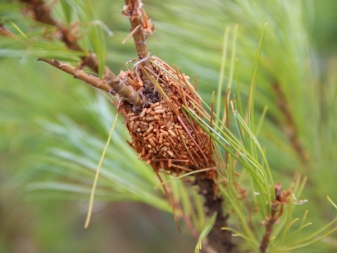
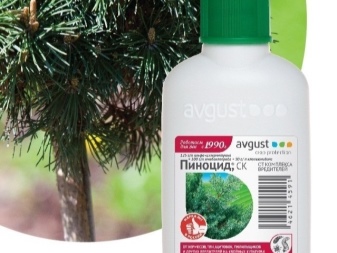
Bacteria
Bacterial burn - a disease caused by the bacterium Erwinia amylovora... It is characterized by abundant decay of cones and shedding of needles. And also the branches of the tree turn black and twist into some kind of hooks. If the cedar has already become infected, then most likely it will die. For prevention, you can use all sorts of chemical fertilizers, since the bacteria enters through the soil.
Cancer (bacterial necrosis) - is a consequence of infection with the bacterium Agrobacterium tumefaciens. With this disease, the main blow falls on the root system. Clumps of dead tissue appear in the roots, similar to large growths. They block the flow of nutrients into the trunk, as a result of which the tree gradually withers. The bacterium enters the plant through damage to the roots. To avoid this, it is necessary to raise the acidity level of the soil, since the acidic environment inhibits the development of bacteria.


Viruses
This is a general designation for all pathogens. These include all sorts of phytoplasmas, viroids, viruses and some microorganisms that can harm the plant.
Diseases of this type can be spread in different ways: resin of an already infected tree, pollen, insects, water, birds. All viral diseases can be identified by similar symptoms. This is a tarnishing of the coniferous cover and a change in its color. Often, with a viral disease, cedar begins to release black resin, which can infect nearby plants.
Virus-infected buds begin to rot and the seeds become soft and watery. To prevent the disease in advance, it is necessary to periodically treat the trunk and branches with chlorinated solutions, not forgetting to feed the tree with mineral fertilizers.
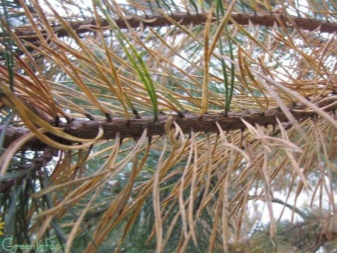
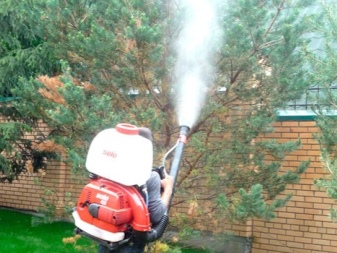
Examples in landscape design
Here is a good example of how Lebanese cedar is introduced into park landscaping.
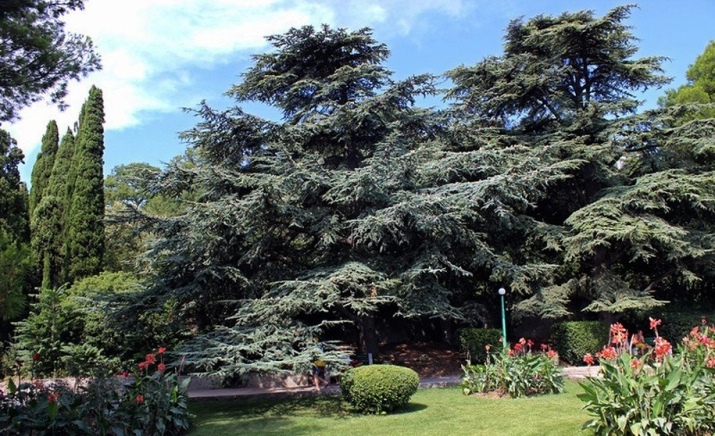
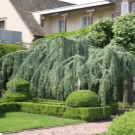

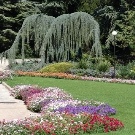
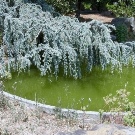
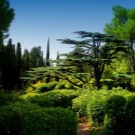
Bonsai trees are best suited for home furnishings.

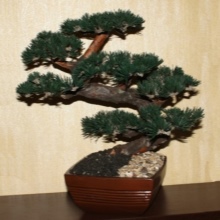

How to grow a cedar at home, see below.



































































The comment was sent successfully.